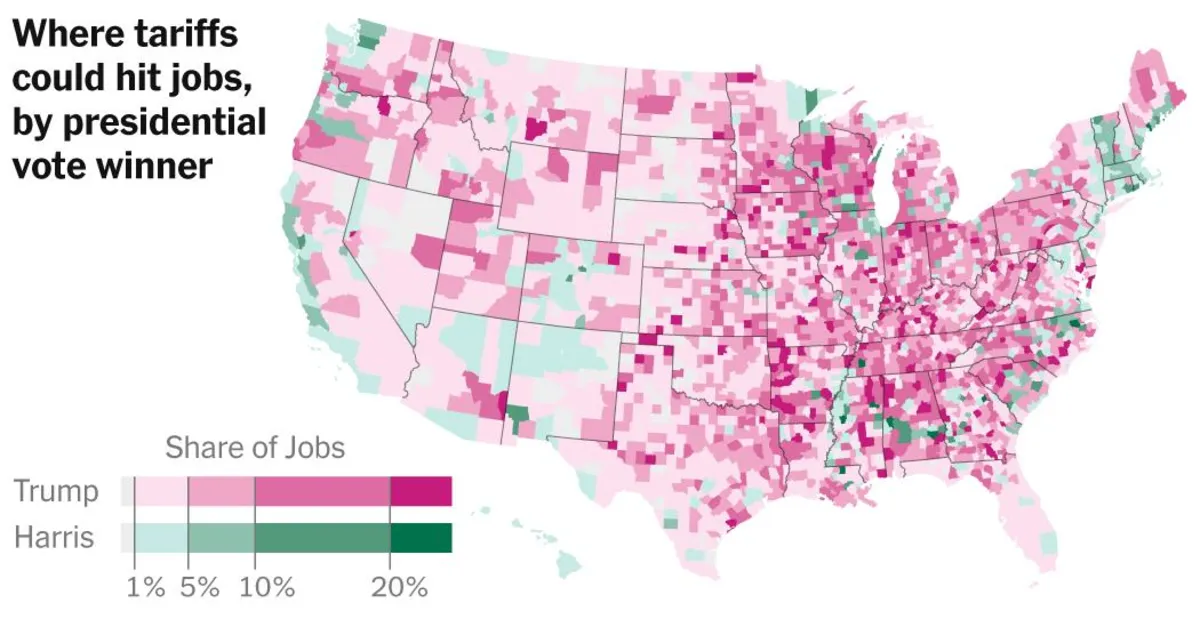
The analysis conducted by The Times employs a sophisticated analytical technique developed by the Brookings Institution, which was initially used to scrutinize the first round of Chinese retaliatory tariffs. This methodology provides a comprehensive understanding of how these tariffs impact various sectors and industries.
To enhance the analysis, The Times gathered extensive lists of U.S. products that are currently under threat of retaliatory tariffs from China, Canada, and the European Union, as of March 14. In total, these six published lists encompass over 4,000 individual product categories, many of which are affected by multiple countries. This wide-ranging data highlights the global implications of trade tensions and the interconnectedness of economies.
As it stands, the tariffs from China and Canada are actively enforced. On the other hand, one set of tariffs from the European Union is slated to take effect on April 1, while another set remains preliminary and could undergo adjustments prior to its implementation in mid-April. This evolving landscape emphasizes the dynamic nature of international trade relations and the ongoing negotiations between these entities.
Once the lists of affected products were compiled, The Times employed a concordance table from the Census Bureau. This tool allows for a precise connection between individual product categories and the broader industries responsible for their production. This step is crucial for understanding the economic impact of the tariffs on different sectors.
In order to assess the potential impact on employment, The Times utilized data provided by Lightcast, a prominent labor market analytics company. Lightcast furnished industry-level employment statistics based on the Bureau of Labor Statistics’ Quarterly Census of Employment and Wages. This census is designed to safeguard the privacy of employers by suppressing employment data for industries with limited establishments at the county level.
To overcome this limitation, Lightcast employs a proprietary algorithm that synthesizes various related data sets, enabling it to estimate employment levels in sectors where data is typically suppressed. This innovative approach ensures a more accurate representation of the labor market amidst the complexities introduced by the tariffs.
For additional context, county election results were sourced from The Associated Press, which adds another layer to the analysis by providing insights into the political landscape that may influence trade policies and tariff decisions.
In conclusion, the methodology utilized by The Times offers a detailed and insightful look into the implications of retaliatory tariffs, leveraging data from credible sources to highlight the multifaceted effects on the economy and employment landscape.